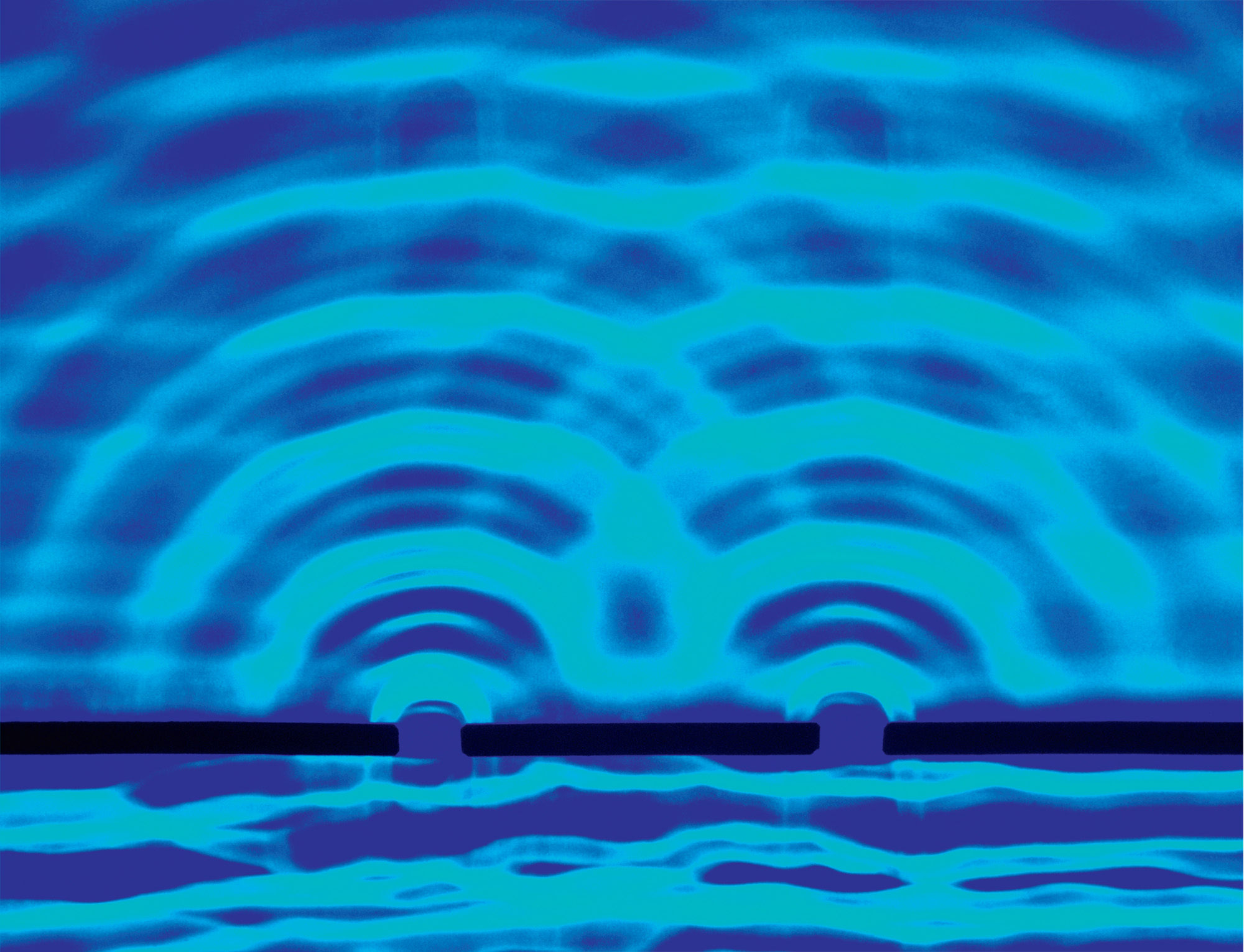
Thomas Young’s own illustration of wave interference. From his book, A Course of Lectures on Natural Philosophy and the Mechanical Arts.
Isaac Newton had explained the way that light is reflected off mirrors and refracted (bent) by prisms in terms of a stream of tiny particles bouncing off things or being deflected round corners. Although the Dutchman Christiaan Huygens and Newton’s contemporary Robert Hooke each developed an alternative explanation, or model, which involved waves, there were no experiments that could test these ideas, and Newton’s model dominated scientific thinking for more than a century. Then, the English polymath Thomas Young devised an experiment that proved that light travels as a wave.
Young began to experiment with sound while he was at Cambridge in the 1790s. He appreciated that sound travels as a wave through the air (or through another medium), and he was interested in the phenomenon of interference, when two sound waves affect one another, either adding up to make a loud noise or cancelling each other out to leave a quieter noise. This led him to think about the behaviour of waves in general, and to devise an experiment to test the wave model of light.

First, he used an apparatus called a ripple tank to study the behaviour of waves in water. This is just a shallow tank of water in which the ripples can be observed. When Young (or anyone else) put a wall across the tank with a small gap in it, ripples generated on one side of the wall would pass through the hole and spread out on the other side in a semicircular pattern. Then, if a second wall, with two holes, was placed in front of these spreading ripples, ripples would spread out from both holes and interfere with one another, making a pattern with some extra large waves in places where the peaks from each set of ripples combined, and much smaller waves where the peak of one ripple overlapped with the trough of another ripple. This is an interference pattern.
In the early 1800s, Young adapted this experiment to study light, and refined it until the results were unambiguous. In a darkened room, a simple screen of card with either a tiny pinhole or a razor slit was placed in front of a source of light. On the other side of the screen there was another screen with two holes, or slits. And beyond that, there was a blank screen where light that had passed through the whole experiment arrived. The light arriving at this final screen made a pattern of light-and-dark stripes, an interference pattern exactly equivalent to the interference pattern of water waves in the ripple-tank experiment. There could be no doubt that light travels as a wave. This became known as ‘Young’s double-slit experiment’, or more colloquially as ‘the experiment with two holes”. Part of the power of the experiment is that it is so simple, and yet so profound. As Young put it, when presenting his results to the Royal Society in 1803, ‘The experiments I am about to relate … may be repeated with great ease, whenever the sun shines, and without any other apparatus than is at hand to every one.”
And yet, there were doubters. Newton was held in such awe that some people refused to accept that he could have been wrong. The idea that you could make a dark stripe by adding two bright beams of light together also confused them. But a few years later a Frenchman, Augustin Fresnel, proved that this was indeed possible.


This was at the time of the Napoleonic Wars, and Fresnel, in France, seems to have been unaware of Young’s work. He independently developed a wave model of light, and wrote it up for a prize competition organized by the French Academy in 1817, asking for explanations for the phenomenon of diffraction, which bends light round corners (by a tiny amount). One of the judges of the competition, Siméon-Denis Poisson, pointed out what he thought was a fatal flaw in Fresnel’s model. According to the wave model, if a small round object, such as a piece of lead shot, was placed in front of a beam of light, the light waves would bend round the object to make a bright spot of light on a screen directly behind it, where both ‘common sense’ and the particle model said the shadow would be darkest. So the judges arranged for an experiment to prove (as they anticipated) that Fresnel was wrong. But the experiment found the bright spot, now known as Poisson’s spot, exactly where the wave theory had predicted. This is one of the best examples of a theory being proved right by an experiment carried out in the hope of proving it wrong. Fresnel got his prize, and the wave theory of light was established. Shocking though it might have seemed to some people, even Newton had not always been right.